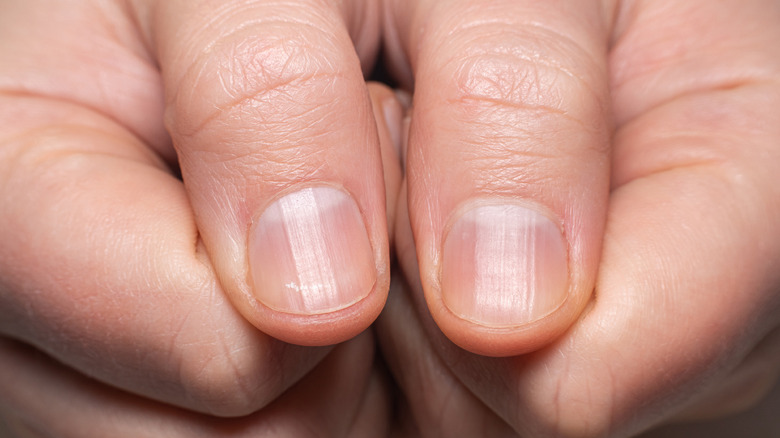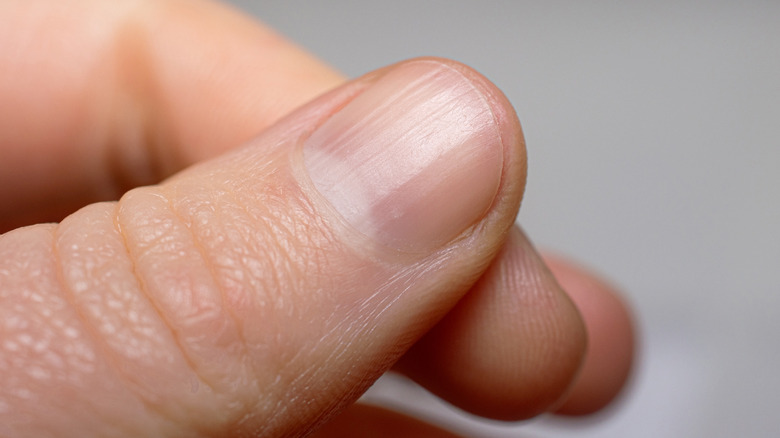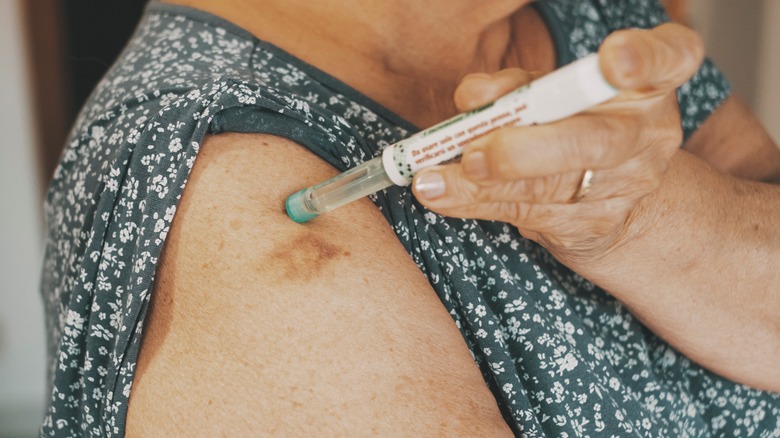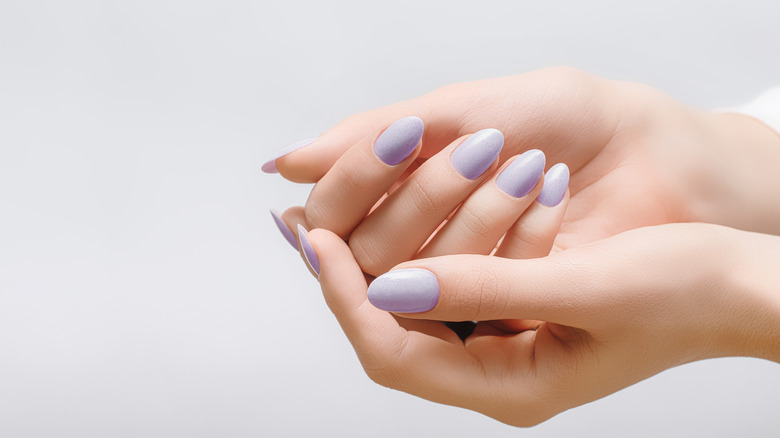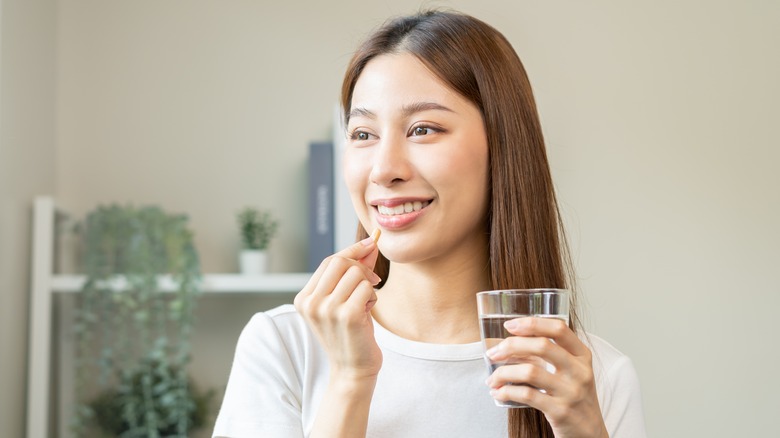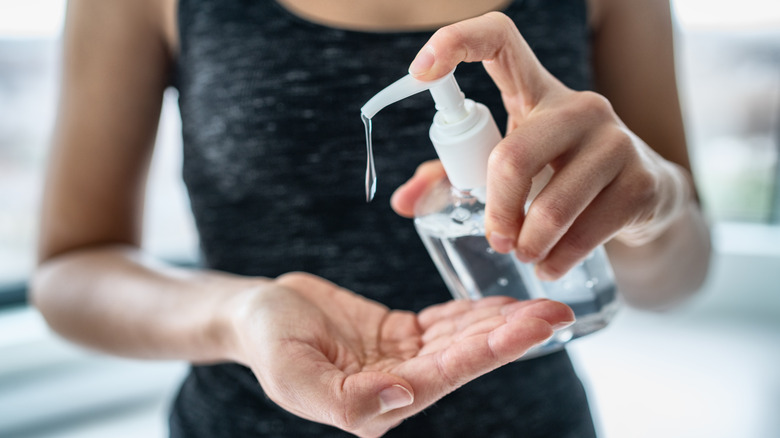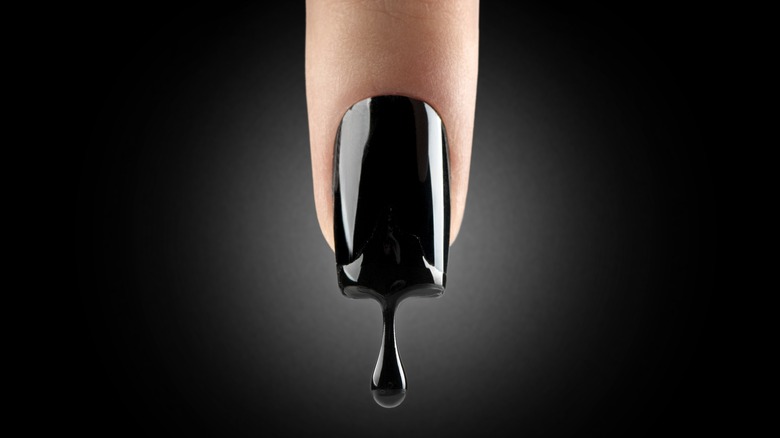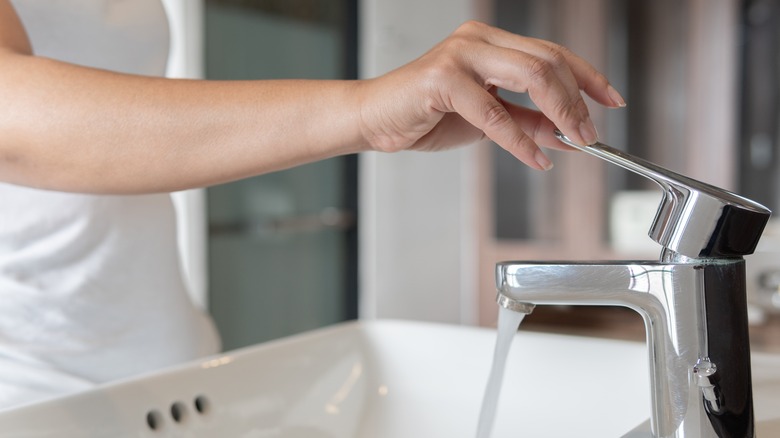11 Tips For Getting Rid Of Unsightly Fingernail Ridges
Want to learn more about unsightly fingernail ridges and how you can treat and prevent them? You might want to know what causes your fingernail ridges, or you might just want to be prepared in case you get them in the future.
Sometimes, fingernail ridges can seemingly come out of nowhere, and it can be jarring to spot that your fingernails are not quite as even and smooth as they once were. These ridges are typically caused by aging, but they can also be a sign of a medical condition or nutrient deficiency or that something is not quite right with your body.
Luckily, there are some simple steps you can take to get rid of your fingernail ridges, depending on the cause. Here is everything you need to know about fingernail ridges, including what they are and what causes them, along with tips for treating and preventing them in the future.
What are fingernail ridges?
Your fingernails are made up of keratin, a protein found in the hair, skin, and nails that helps strengthen and protect them from damage. Fingernail ridges are horizontal or vertical dents or lines that are visible on your fingernails. Vertical fingernail ridges are usually harmless and are the most common type of ridge, while horizontal ridges are more concerning.
Ridges are harmless in many cases. The most common cause of ridges is aging, but they can also be a symptom of a medical condition or an injury to your fingernail. Keep in mind that other health conditions can cause fingernail symptoms that look a lot like ridges.
Figuring out what is causing your ridges is the best way to determine what kind of treatment you need. You can typically diagnose your fingernail ridges at home, but depending on the severity or other symptoms, you might need to see a physician to determine the cause and the appropriate treatment method.
Causes of fingernail ridges
Vertical fingernail ridges, which run from the bottom of your fingernail to the tip of your finger, are typically a sign of aging. You're probably aware that your skin wrinkles and folds with age, but did you know that your nail beds and fingernails can also show signs of aging? In addition to ridges, your fingernails might break more easily, start to split, lose their smooth shape, fissure, or become either thinner or thicker.
On the flip side, vertical ridges can also be caused by conditions such as anemia, trachyonychia, or rheumatoid arthritis. These conditions typically cause other symptoms along with the vertical ridges. For instance, anemia can cause vertical fingernail ridges along with dents and changes in nail texture and color. If you notice vertical ridges on your fingernails and they feel brittle or rough, you might have another medical condition such as peripheral vascular disease and should go to a physician for a diagnosis.
Horizontal ridges, also known as Beau's lines, are deep fingernail ridges that run horizontally from one side of the nail to the other. Beau's lines are usually a sign of some underlying medical condition such as unmanaged diabetes, thyroid disease, acute kidney disease, syphilis, or mumps. Beau's lines can also show up in those going through chemotherapy. In any case, if you develop horizontal fingernail ridges, you should see a physician immediately.
Regularly hydrate and moisturize your hands and fingernails
Hydrating and moisturizing your nails and hands regularly is key to keeping them healthy. Use oil or lotion on your fingernails, hands, and cuticles to keep them hydrated and moisturized. Hydrate your nails regularly with an oil or hand cream to protect your fingernails' keratin and reduce the appearance of nail ridges.
Make sure to use a moisturizer that includes alpha hydroxy acids and ceramides, since these ingredients help nourish and moisturize your fingernails. If you have brittle nails, you should thoroughly moisturize your fingernails and skin before bed and wear cotton gloves to allow your fingernails to adequately absorb the moisturizer throughout the night.
Two popular methods exist for hydrating and moisturizing your fingernails. The first involves applying petroleum jelly, ointment, or hand cream to your nail plates, cuticles, and hands. The second method consists of soaking your fingernails in oil, whether olive oil or bath oil. If your fingernails are in particularly bad shape, you might choose a combination of both methods. You can do so by first soaking your fingernails in oil, removing the excess oil, and finally applying a moisturizing hand cream to your nails.
Maintain a healthy diet and exercise routine
Eating a healthy diet also helps to ensure you're getting enough vitamins to prevent ridges from appearing on your nails, since fingernail ridges can often be a symptom of an underlying vitamin deficiency or systemic issue. Eat foods that help promote nail growth. These include zinc-heavy foods such as mushrooms, spinach, fish, and lean meats; biotin-heavy foods like nuts, eggs, and vegetables; and dairy products such as Greek yogurt, cottage cheese, and milk.
About 45 to 50% of your calories should come from healthy carbohydrates, including whole grains, fruits, and vegetables; 20% should come from high-protein foods like beans, fish, and lean meats, and 20 to 30% should come from healthy fats, including seeds, nuts, and olive oil.
The same goes for maintaining an excellent exercise regime. One of the best ways to keep your nails looking healthy and to prevent fingernail ridges is to maintain regular cardiovascular activity to keep your circulatory system healthy. Regular cardio exercise also helps promote blood flow to your fingernails, which prevents ridges from forming.
Buff your fingernails
Gently buffing your fingernails may not actually treat the underlying condition, but it can at least help reduce the appearance of the ridges. Use a buffing block to even out the surface of your fingernails. Just make sure not to overly buff your nails, particularly if your fingernail ridges are on the deeper side. Nail buffers can thin out the plate of your fingernails too much, which makes your nails more vulnerable to breakage and trauma. Simply buff your fingernails about once a month at the most to camouflage the fingernail ridges.
Wondering how you actually buff your fingernails? Use a four-way nail buffer, and take advantage of all four parts of the buffer device to file, shine, smooth, and sand your fingernails. Rather than going back and forth across your nails, be sure to buff your fingernails in the same direction to keep them from splitting. Most of these nail buffers are budget-friendly, so adding a device like this to your home nail routine won't break the bank.
Use a ridge filler or stay away from nail polish altogether
Contrary to popular belief, polishing your nails regularly doesn't actually reduce the appearance of fingernail ridges. Conversely, painting over your fingernail ridges with nail polish can highlight and draw more attention to your ridges. This is where ridge fillers come into play. Try ridge-filling nail polish, which works like a base coat of polish to make your fingernails appear more even and smooth. True to its name, the ridge filler literally fills in the ridges on your fingernails to make your polish look smoother.
You can also take a break from using nail polish completely to help your fingernails heal. When you constantly cover your nails with polish, your fingernails are subjected to long-term water exposure, which can dehydrate your fingernails and the surrounding skin, weaken your nails, increase their brittleness, and lead to more ridges.
Nail polish remover can worsen the issue by further dehydrating your nails and changing the nail surface's chemical properties. Take at least a three-week break from polishing your nails to give your fingernails time to strengthen and grow out, especially if you notice a lot of ridges, brittleness, or dryness. While taking a break from nail polish, you can help your nails grow by applying a keratin treatment.
Take biotin and other supplements
Biotin supplements and other vitamins and supplements can help prevent fingernail ridges. Biotin is a vitamin involved in keratin production that can support the firmness and thickness of your fingernails and manage brittle ridges. You can take biotin either through injections administered by a healthcare provider or through oral supplements that you take by mouth on a daily basis. Keep in mind that biotin supplements can potentially skew your lab results, so speak to your physician if they recommend you have blood tests done and you are currently taking biotin supplements.
In addition to biotin, collagen supplements can also help to keep your fingernails healthy, since collagen can impact your keratin production as well. Collagen is a protein family that includes most of the animal kingdom's proteins and which helps keep our skin and nails looking young and healthy. When patients in one study took collagen every day for five-and-a-half months, they had better nail health, including improved nail appearance, reduced breakage, and faster nail growth.
Reduce your use of hand sanitizers containing alcohol
Using hand sanitizers with alcohol can dry out the skin around your fingernails, leading to ridges. The alcohol in these hand sanitizers can cause a number of issues with your fingernails, particularly if you are wearing nail polish. These include drying out your nail polish, cracking your cuticles, and causing your nail polish to chip. When your fingernails get very dry, they also become brittle.
That's why it helps to reduce your use of hand sanitizers containing alcohol and to search for hand sanitizers that include hydrating ingredients such as aloe vera. Some hand sanitizers out there include labels claiming they are free of alcohol, but it's important to take this label with a grain of salt since pretty much all hand sanitizers include alcohol to kill germs. When you do use alcohol-based hand sanitizers, make sure to moisturize your hands and nails as well to prevent your fingernails from breaking and cracking.
Avoid biting or picking at your fingernails
Your nails and skin both thicken when they respond to external stimuli. You can reduce the chances of nail irregularities, including ridges, by avoiding biting or picking at your fingernails — one of many mistakes that are destroying your nails. It helps to figure out what triggers you to bite or pick at your nails and come up with solutions. For instance, you can get regular manicures, keep your nails short, and apply bitter-tasting polish to the nails to keep yourself from biting or picking at them.
It also helps to keep your fingernails somewhat short and neat to protect your nails from trauma during everyday activities, but make sure to avoid over-trimming your nails since this can actually cause fingernail ridges. Try clipping your fingernails only when white is visible on your nails, and don't clip your fingernails so short that there is no longer any white on the nails. Make sure to trim your fingernails straight across before filing the nail tips into a round, gentle curve with a glass nail file. Filing your nails also helps protect them from trauma in the future.
Protect your fingernails from ultraviolet rays
Just like your skin, your fingernails can also get damaged by ultraviolet rays, so your nails need the same level of protection from UV rays as your skin. That's where ultraviolet filter nail polish comes into play.
You can protect your nails by painting them with either a UV filter nail polish or a nail polish in an opaque shade to block out the UV rays. UV filter nail polish is much like sunscreen for your fingernails. These nail polishes protect your nails from UV damage by either reflecting or absorbing the rays of the sun.
Ultraviolet filter polish has a number of benefits for your nails. For example, it stays on your fingernails for up to two weeks, so you don't need regular touchups on your nails. It also dries quickly, looks glossy and lustrous, and saves you money if you do your nails at home. UV filter nail polish also makes your fingernails look professional, even if you use a home nail kit.
Reduce water exposure to your nails
Over washing your hands can strip your skin of natural emollients and oils, leading to dryness, eczema, and nail changes such as ridges. Obviously, you should wash your hands when you need to do so, but don't over wash them. The same thing can happen when you wash your dishes or when you constantly get manicures.
The cells in your nails expand when they absorb water, but they contract when your nails dry out, which leads to weakened bonds between the nail cells over the long term. These weakened bonds can cause nail changes and issues that include fingernail ridges. Opt for a moisturizing hand soap when you do wash your hands, and make sure to use a hand moisturizer after you wash your hands as well.
If your hands do come across water on a regular basis, wear protective gloves. Try using cotton-lined rubber gloves to protect both your fingernails and hands. If you can't wear protective gloves for some reason, make sure to regularly moisturize your nails.
Protect your nails and hands when working with chemicals
Household cleaners and other items that contain chemicals can also have an impact on your fingernails. That's why it's crucial to protect your hands by wearing gloves when working with, handling, or disposing of any cleaning products or anything else containing chemicals. You should also avoid using the products' trigger sprays to apply them to surfaces since this allows the product to more easily come into contact with your fingernails. Instead, spray the product onto a cleaning cloth directly or switch the nozzle to the stream setting.
Make sure to thoroughly follow all the safety info from the manufacturer to prepare your cleaning solutions. Before using a cleaning product, read the label in detail so you understand how to properly use the product, are aware of any precautions to take while using it, and understand what to do during any accidental exposures should they occur. Use pre-mixed cleaning solutions when possible or dilute the concentrated cleaning solutions according to the label's instructions. Finally, wear protective gloves when you pour or mix the chemicals to protect your hands and fingernails.
When to consult a doctor about your fingernail ridges
If you notice that your fingernail ridges are horizontal or that your fingernails start to change color, it's time to consult your doctor, since these changes could mean you have an underlying medical condition. You should also see a doctor if your fingernail ridges give you any discomfort or pain.
You can either see your primary care physician or a dermatologist. Your primary care physician will know how to evaluate for internal health conditions that might be causing your fingernail ridges based on your symptoms, while your dermatologist can screen for any skin issues that could be causing them.
In addition, visit your doctor if you notice any changes in the texture or color of your fingernails. For example, if your nails begin to look black, brown, or another dark color or if you spot another new surface change, it's time to consult your physician. If you're unsure about whether you should visit your doctor, it's best to schedule a consultation anyway, since your symptoms could be a sign of a serious condition.
